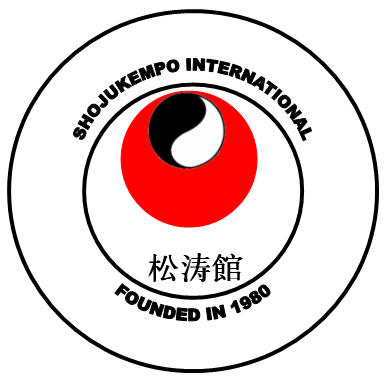|
|
|
HISTORY OF OKINAWAN, HAWAIIAN KEMPO
Unfortunately
it is very difficult to define Kempo in the way that one can define Judo, Aikido or Shotokan Karate, for example. Jigoro Kano
formulated a precise curriculum and training method for Judo a century ago and that style continues to exist today. Morihei
Ueshiba and Gichin Funakoshi did the same for Aikido and Shotokan Karate, respectively. If you say to someone that you practice
Judo, anyone with even a minimal martial arts background will know exactly what you practice. The same unfortunately does
not hold true for Kempo.
And
while every teacher of Judo will have a different teaching style, or may emphasize different aspects of the art, they are
all still teaching the same art. One could switch from one Judo school to another and still be learning the same curriculum.
In Kempo things are not nearly so homogenous. Different schools of "Kempo" or "Kenpo" may very well be teaching totally different
arts.
The
word Kempo means "Fist Law," where the word Law has the connotation of a Law of nature, or a Law of God. Kempo is a translation
of the Chinese word "Chuan Fa," which means boxing or fighting. Japanese and Okinawans would use the term Kempo to refer to
a martial art that came from China, or was heavily influenced by Chinese martial arts.
Historically
speaking, Kempo first came into existence in Japan during the Edo period, which started in roughly 1600. Schools of Jujutsu
that combined their art with Chinese Chuan Fa would come to call themselves Kempo.
And
in Okinawa as early as the 12th to the 13th century native experts in the indigenous Okinawan art simply called "Te," or "Hand,"
would combine their art with Chinese Chuan Fa. They called the resulting art "Tode," which means "China hand" (the original
meaning of Karate, which now means "empty hand,") or Kempo.
China
Many
martial arts historians would have us all believe that every martial art in existence anywhere in the world at any time in
history can trace its roots directly to the Shaolin Temple. This claim is, of course, absurd.
Much
historical evidence suggests that systematized methods of combat - both armed and unarmed - existed in China well before the
time of the Shaolin temple. In fact, for the first two hundred years or so of the existence of the Shaolin Temple, it
had nothing to do with martial arts at all. The Shaolin Temple was originally built in the 4th century AD but its legendary
involvement in the evolution of the martial arts began in the 6th century with the arrival of Bodhidarma from India.
Much
of what we know of Bodhidarma comes to us from legend, not historical fact. We do know with some certainty that he was the
first patriarch of Chan Buddhism - which later became known as Zen when it arrived in Japan. It is extremely difficult,
however, to confirm with any certainty at all what role he may have played in the history of martial arts. Legend tells us
that he founded the very first Shaolin temple martial arts. We do know that Chan Buddhism teaches that we should strive to
strengthen our bodies as well as our minds. It is likely that Bodhidarma taught, at the very least, some sort of breathing
exercises that involved some type of physical movement - perhaps something similar to yoga or chi kung. But it is impossible
today to know for certain exactly what early Shaolin martial arts looked like.
In
any event, the Shaolin temple did come to play some role in the evolution of Chinese martial arts, but it most definitely
was not the ultimate birthplace of those arts.
Countless
styles of Chinese Kung Fu, or Wushu, would ultimately spread throughout China and indeed throughout the world. Many of these
styles claim to have their roots in Shaolin temple martial arts, but many others do not. Martial arts styles often sprang
up within a village or a family that had nothing at all to do with Shaolin. These families would pass on their art through
the generations, and some of these arts would ultimately grow and spread beyond their native village or family.
We
do also know that Chinese martial arts would influence the development of martial arts in many other neighboring cultures
in Asia.
Back to top
Japan
The
15th through the 18th centuries saw the early formation of many of the modern ryu or schools of Japanese Jujutsu. Up until
that time various systems of unarmed combat using joint locks, throws and submission holds had developed in Japan independent
of other Asian fighting systems.
Some
claim that Japanese Jujutsu descends directly from Chinese Chin-Na. While it is true that in many instances Japan borrowed
elements of Chinese culture and adopted those elements as her own, this does not seem to hold true for Jujutsu. Based on the
available evidence, I believe Jujutsu to be native to Japan. It's development and evolution certainly coincided with the history
of the great Japanese warrior families.
Evidence
suggests that at some point in the history of Japanese Jujutsu some influence came into play from Chinese boxing. Japanese
Kempo methods first came into existence as combinations of the native Jujutsu with Chinese boxing. Some stories say that Japanese
warriors who knew Jujutsu trained in China for a time, and then returned to Japan, combining the punch and kick methods they
had learned with their native art. Other stories say the opposite - that Chinese Kung Fu experts came to Japan and taught
their art to native Jujutsu practitioners. Either way, these styles continued to evolve in Japan, not China, and continued
to be primarily Jujutsu styles that may have focused somewhat more on striking than most other Jujutsu styles. These styles
represent a very tiny minority of the Japanese Jujutsu systems.
In
the late 19th and early 20th centuries styles such as Aikido and Judo came into existence (founded by Morihei Ueshiba and
Jigoro Kano respectively) that would attempt to modernize various traditional Jujutsu systems.
Back to top
Okinawa
Martial
arts also developed on the island of Okinawa. Today, Okinawa is part of Japan. But this was not always the case.
In
its earliest days, an indigenous method of combat developed on Okinawa. Over the years this method would come under the influence
of Chinese martial arts. Okinawa often served as a stop on major trade routes throughout Southeast Asia which left it exposed
to many other cultures, particularly that of China. The fact that the Chinese martial arts influenced the Okinawan martial
arts, which they clearly did, however, does not in any way mean that the Okinawan arts were a direct copy of the Chinese arts.
Okinawan martial arts developed in Okinawa as a totally separate entity from any Chinese art.
The
martial arts of Okinawa would ultimately be called "Okinawa Te," or "Tode," which means "Chinese hand." Two main schools
of Okinawa Te developed: Shorei-ryu and Shorin-ryu. Eventually the name Tode was changed to "Kara Te," or Karate. People sometimes
referred to the Okinawan arts as "Karate Kempo," or "Okinawan Kempo," as well. Kempo simply means "Law of the Fist," and could
be a translation of the Chinese term, "Chuan Fa."
Many
people believe that Karate is originally Japanese. This is not true. The art of Karate definitely developed entirely on Okinawa.
In fact, it would not spread to Japan until the early 20th century, only a short time before it spread to North America. Gichin
Funakoshi performed the first public display of Karate in Japan in 1917. He later founded Shotokan Karate in Tokyo in 1938.
Back to top
Hawaii
In
the early 20th century Hawaii became a real melting pot of East Asian cultures. Hundreds of Japanese, Chinese, Okinawans,
Filipinos, Polynesians, etc. migrated to the Hawaiian Islands at this time. They brought with them countless styles of martial
arts.
Much
of the martial arts training would go on in a very informal, sometimes secretive way. There were no actual "schools" at first
- rather people would simply learn from their neighbors. Usually, at least at first, each martial art would stay within its
cultural group, i.e. Okinawans would only teach Karate to other Okinawans, while Filipinos would only teach their arts to
other Filipinos.
In
the late 1920s and early 1930s some interesting events transpired that may have been extremely significant to modern day Kempo
in North America.
First, a series of Okinawan Karate experts arrived in Hawaii to teach their art. (Click here for more details.) These included Kentsu Yabu in 1927,
Choki Motobu in 1932 (although he was detained by INS and only trained one person during his short stay), Mizuho Mutsu and
Kamesuke Higaonna in 1933 and finally Chojun Miyagi in 1934.
Thomas
Miyashiro, born in Hawaii to Okinawan parents, trained in Karate with an Okinawan immigrant by the name of Kuniyoshi. Later,
he trained with Motobu, Mutsu and Higaonna during their visits to Hawaii. He continued teaching for some years after their
departure.
Also, in 1929 Henry Okazaki, the founder of Danzan Ryu Jujutsu, began teaching Jujutsu in Honolulu. In 1936
he built his own gym in Honolulu which served as his Jujutsu Dojo. Most of the martial arts training at this time was still
being done very informally, or at the most as part of a club that would run its classes at a local YMCA or other such establishment.
Okazaki's school was one of the first instances of a martial arts school operating in its own space. Okazaki was also one
of the very first to teach Jujutsu to non-Japanese. Other Japanese Jujutsu teachers would condemn him for this.
The spread of kempo to the Islands is largely owed to Dr. James
Mitose, a Japanese-American born in Hawaii in 1916. At age five he was sent to Kyushu, Japan, for schooling in his ancestral
art of self-defense, called "kosho-ryu kempo," said to be based directly on Shaolin kung-fu. Mitose returned to Hawaii in
1936. In 1942 he organized the Official Self-Defense Club at the Beretania Mission in Honolulu. This club continued under
his personal leadership until 1953, when it was assigned to Thomas Young, one of his chief students. Only five of his students-Young,
William K.S. Chow, Paul Yamaguchi, Arthur Keawe, and Edward Lowe-attained the rank of black belt. But the kempo arts flourished
in Hawaii and later on the west coast of the mainland, where three of Mitose's proteges formed clubs of their own. In 1953,
before going to the mainland, Mitose wrote What is Self-Defense, reprinted by his students in 1980.
Of Mitose's students, perhaps Chow played the most significant role
in the evolution of the American martial arts. Although he had learned kosho-ryu kempo under Mitose, Chow was the first to
teach what he called kenpo (first law) karate. From 1949 Chow trained a great number of students to therank of blackbelt,
including Adriano Emperado, Ralph Castro, Bobby Lowe, John Leone, and Paul Pung. By far the most famous of Chow's students
is Ed Parker, a leading pioneer in the American karate movement.
Adriano "Sonny" Emperado was a co-founder in 1947 of the kajukenbo
system, formed by five experts: Walter Choo (karate), Joseph Holke (judo), Frank Ordonez (jujutsu), Emperado (kenpo), and
Clarence Chang (Chinese boxing). The name is an acronym derived from the five disciplines of its founders: ka from karate,
ju from judo and jujutsu, ken from kenpo, and bo from Chinese boxing. Today, this style is one of the most prominent in Hawaii.
In 1950 Emperado founded Hawaii's first and largest chain of karate schools, the Kajukenbo Self-Defense Institute, Inc., in
which he still holds the office of vice-president. Probably Emperado's most famous student is Al Dacascos, founder of the
won hop kuen do system..Another young man who trained under Emperado by the name of Victor “ Sonny “ Gascon, Gascon
trained under Emperado for many years. Victor “ Sonny “ Gascon is the founder of Karazenpo Go Shinjitsu. This
Hawaiian / Okinawan style of Kempo is learned worldwide. Gascon’s Black Belt student was George Pasere. Pasere was the
first Kenpo Dojo in New England, mainly in Onlyville, Providence, Rhode Island. | |
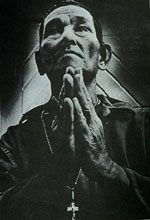
Great Grandmaster James Mitose founder of Kosho
ryu Kempo
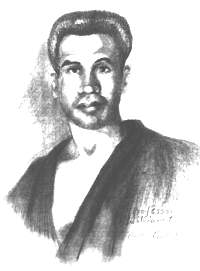
Grandmaster William K.S. Chow founder of Kara Ho Kempo
he was a student of Mitose
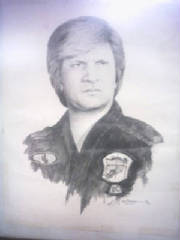
Grandmaster Ed Parker founder of American Kenpo and a student
of Chow
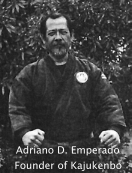
Founder of Kajukenbo Sijo Adriano D. Emperado a student
of Prof. William K.S Chow
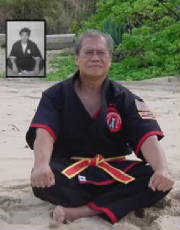
Sijo Victor " Sonny " Gascon founder of Karazenpo Go Shinjitsu
and a stident of Great Grandmaster Adriano Emperado

Great Grandmaster George Pasere founder of New England
Kenpo / Kempo of the Karazenpo System. he is a student of Great Grandmaster Gascon.

Grandmaster Nick Cerio founder of the Nick Cerio
System a student of Great Grandmaster Pasere. Prof. Cerio has help Martial Artsist from around the world in Kenpo, Kempo and
Shotokan Karate-do.
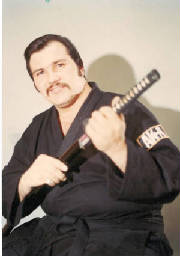
Grandmaster William R. Gregory founder of Kajukenpo
a student of Grandmaster Nick Cerio in Kenpo, Grandmaster Dr. Daniel K. Pai in Pai Lum Kung-fu / Shorin ryu, Tadashi
Yamashita Shorin ryu.
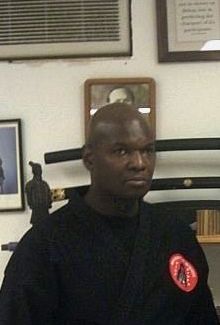
Prof. Larry S.L. Martin Hanshi founder of Shojukempo. Shojukempo
is a style combinding 3 major ryu's ( styles ) Traditional Shotokan Karate-do, Okinawan / Hawaiian Kempo and Aikijujitsu.
the teaching of Great O-Sensei Funakoshi, Great Grandmaster Mitose, Prof. Cerio, Grandmaster Gregory, Dr. Pai, Great Grandmaster
Parker and menny others. Shojukempo is a Traditional Martial Art!
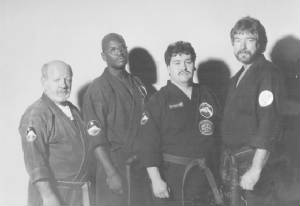
Prof. Nick Cerio, Shihan Larry S.L. Martin, Shihan
Fernando Restrepo, Hanshi Bruce Judnick 1996
|
